| Blade Size | 11" |
|---|---|
| Handle Size | 5" |
| Blade Material | High Carbon Steel |
| Handle Material | Rosewood |
| Scabbard Material | Brass, Pinewood, Refined Water Buffalo Leather |
| Handle Type | Rat Tail Tang |
| Hand Orientation | Ambidextrous |
| Khukuri Weight | 550gm |
| Belly | 5.7 cm |
| Upper Spine | 8 mm |
| Lower Spine | 3 mm |
| Total Weight | 850gm |
11″ BSI Historical Service No. 1 Khukuri | British Army Service Issue Kukri
US$ 123.00
This 11″ BSI Historical Service No. 1 Khukuri is one of the most common and popular khukuri amongst the Gurkha soldiers of the British Army. It has an 11-inch razor-sharp blade made from highly graded 5160 carbon steel with a 5-inch rat tail tang handle made from rosewood.
This is 11″ BSI Historical Service No. 1 Khukuri | British Army Standard Issue Kukri reproduced by Ex Gurkha Khukuri. It is a working replica of the 1959 – 1995 version of the British Service Issue khukuri (also called Kukri or Khukri by many people outside Nepal). The blade has great heat treatment and the knife is very sharp. It also has a balanced oil quenching temper on the edge and is therefore very strong.
This 11″ BSI Historical Service No. 1 Khukuri is one of the most common and popular khukuri amongst the Gurkha soldiers of the British Army. Service No. 1 Khukuri is officially issued by the British Army to the Gurkha regiment military in the UK. It is provided to all Gurkha regiment of the British Military soldiers during enlistment and is retained by them throughout their army career.
The khukuri is inspected regularly by an officer, this khukuri is usually used during parades and on active duty. This Service No.1 khukuri has the recruitment year and the country’s name engraved on the left side of the blade. This engraving on the blade started because in the olden days military soldiers used to forget their enlistment year due to too many wars.
The notch (Kaura or Kaudi) in the blade near the hilt of most khukuris serves as a conduit for the blood on the blade to drip out, thus preventing it from soiling the hilt and as well as a place for catching and neutralizing an enemy blade.
There is a beautifully hand-etched metal tip on the scabbard to protect the tip of the blade from any unnecessary damage. There are also two pockets on the back of the scabbard which hold a blunt steel called “Chakmak” for sharpening the blade or for creating sparks by striking it to a flint and a little knife known as “Karda” used for skinning small animals such as rabbits.
Only logged in customers who have purchased this product may leave a review.

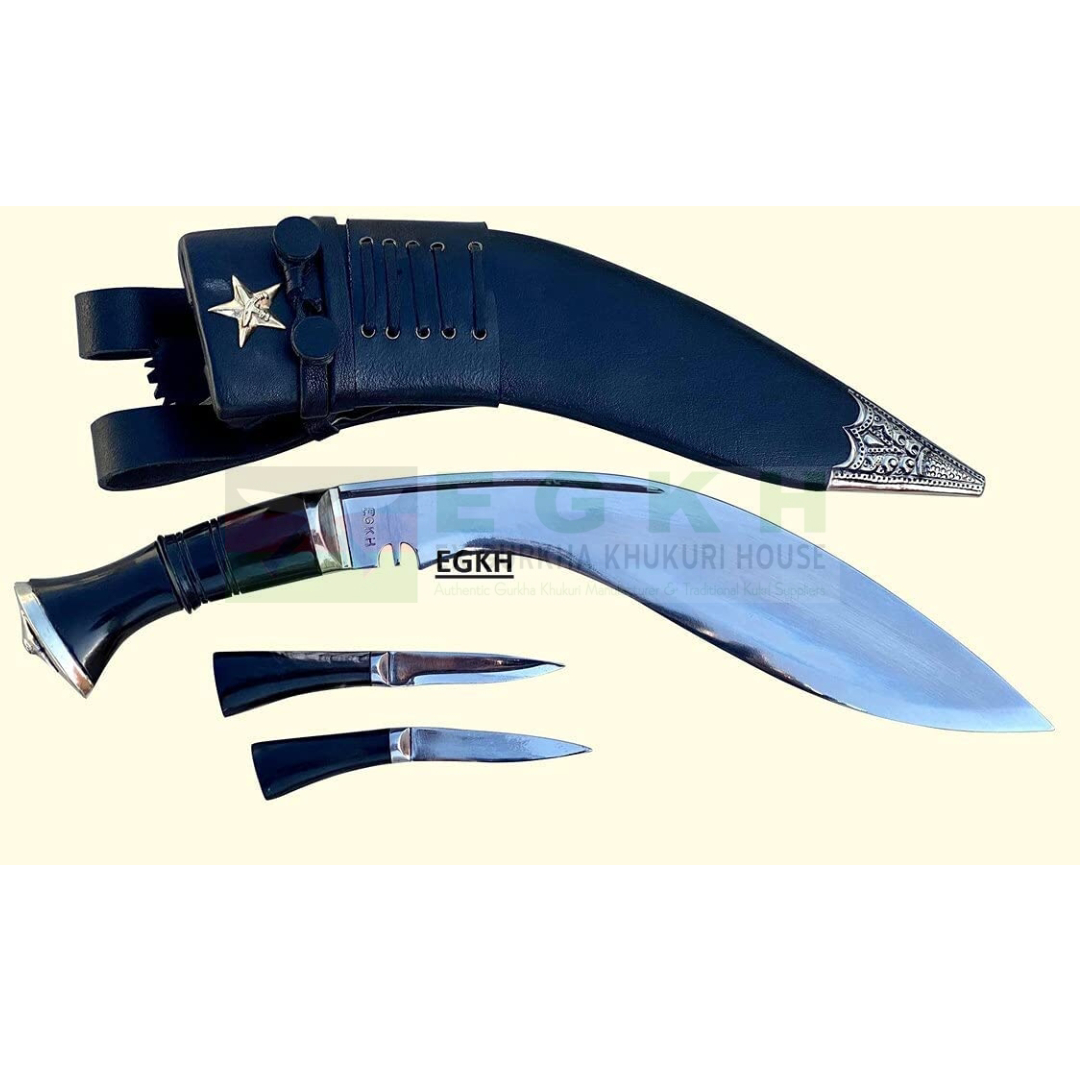
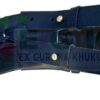
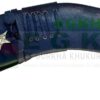
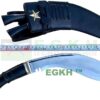
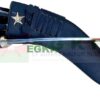
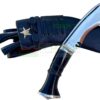
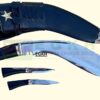
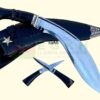
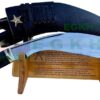
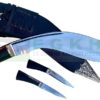
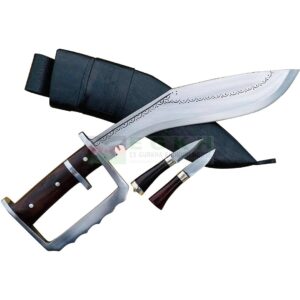
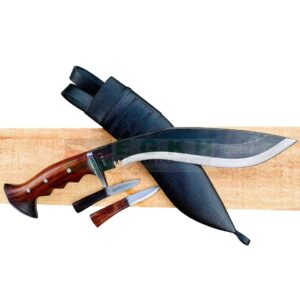
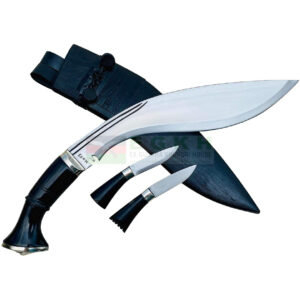
Reviews
There are no reviews yet.